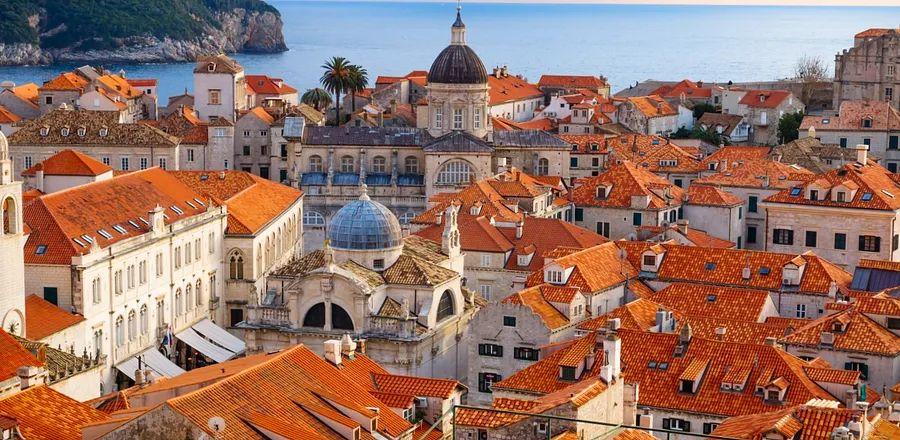Europe's Summer Hotspots Are Even More Enchanting in Winter

Europe’s iconic summer destinations (Greece, Croatia, Sicily) are well-known, yet they come with the challenges of overcrowding, rising heat waves, and exorbitant hotel prices during the summer months.
Instead, think about visiting these popular spots in the off-season. Winters in these seven locations mean cooler, more comfortable temperatures, a touch of holiday spirit, and possibly a fresh outlook on ideal winter getaway destinations.
1. Dubrovnik, Croatia
Dubrovnik is justifiably known as the 'pearl' of the Adriatic. Its stunning coastal setting, meticulously preserved medieval architecture, and rich cultural heritage have earned it UNESCO World Heritage status. With mild winter temperatures and delightful holiday celebrations, this city is a fantastic choice for off-season travelers. In December, the Old Town takes on a magical, intimate atmosphere with Christmas markets and outdoor concerts. Don’t forget to try orahnjača, a beloved traditional walnut roll cake.
Visitors can enjoy a wide range of activities throughout the year. Stroll along the ancient city walls and take in the breathtaking views from Minčeta Fortress, then explore Rector’s Palace, which is now home to the Cultural History Museum.

Photo by FiledIMAGE/Shutterstock
2. Provence, France
Although Provence's renowned vineyards, olive orchards, and lavender fields may lie dormant in the winter months, the countryside enters peak truffle season in late fall and winter. Embark on a foraging tour with Les Pastras to hunt for this delicacy, and explore bustling markets filled with an array of local products, including seasonal fruits, nougat, honey, and olive oil. The region is steeped in history, too—the Romans recognized its potential for trade and wine production centuries ago, and many ancient Roman ruins are still preserved today. Day trips to Avignon’s Gothic Pope’s Palace, Arles’s UNESCO-designated arena, and Nimes’s Pont du Gard are easily accessible from the charming town of Aix-en-Provence.

Photo by Marco Cuccu/Shutterstock
3. Sardinia, Italy
This 9,305-square-mile island in the heart of the Mediterranean embodies la dolce vita, island style. Visit for its soft sandy beaches, crystal-clear turquoise waters, and natural wonders (including stunning sea caves like Neptune’s Grotto), and immerse yourself in charming villages, ancient sites, and exquisite local dishes. Various towns across the island—such as Nuoro, Oristano, Mamoiada, and Ottana—celebrate Carnival in February, each showcasing their own vibrant masquerade parades.

Photo by Robert Harding Video/Shutterstock
4. Madeira, Portugal
Many visitors to Madeira come primarily for its walking paths: The island boasts a network of ancient levadas, or irrigation channels, that form about 1,800 miles of trails, mostly weaving through lush forests and along steep, breathtaking cliffs. Strolling through Funchal is also rewarding, with beloved cookie factories like Fábrica Santo António and wine shops (legend has it that Madeira wine was used to toast the signing of the Declaration of Independence) dotting the streets. Don’t miss the Madeira photography museum and Bordal, one of the few remaining embroidery workshops where you can witness artisans at work.
January is also a time for local customs and celebrations, including Festa de São Sebastião, honoring Saint Sebastian, the patron saint of Funchal. Participate in the vibrant blend of religious processions, local music, and traditional dances. Conclude your day with dinner at Kampo, led by the innovative chef Júlio Pereira.

Photo by Robert Harding Video/Shutterstock
5. Cotswolds, United Kingdom
Savor warm cups of tea while relaxing in the Cotswolds, a region located two hours west of London. Its rolling hills are occasionally interrupted by charming villages featuring stone houses and thatched roofs. During winter, visitors can wander through snow-blanketed landscapes in quaint towns like the picturesque Bourton-on-the-Water. For a few nights from November 22 to December 30, 2024, the magnificent Sudeley Castle, a Tudor masterpiece dating back to 1442, will host the Spectacle of Light after-dark event, inviting guests to traverse an illuminated trail inspired by the tale of Sleeping Beauty.

Photo by Robert Harding Video/Shutterstock
6. Lanzarote, Spain
As the easternmost island in the Canary archipelago, Lanzarote features a breathtaking volcanic landscape comprising lava flows, ash fields, hidden caves, and craters that visitors can explore even in winter. With temperatures hovering between 60° and 70°F, be sure to visit Timanfaya National Park, which displays striking rock formations and stretches of burnt orange earth. The volcanic eruptions that formed the island also created secluded sandy beaches and azure coves, including the famous Papagayo beach. Additionally, the island offers excellent scuba diving opportunities during the colder months, allowing you to encounter angel sharks, octopuses, and rays without the usual crowds.

Photo by hybbGO/Shutterstock
7. Crete, Greece
The largest of the Greek islands, renowned for its pink-sand beaches, agrotourism, and ancient Minoan ruins. While numerous ferries operate year-round from Athens, a quick 50-minute flight to Heraklion is both convenient and affordable. Upon arrival, the bustling port towns of Chania, Rethymno, and Heraklion—located along the northern coast—offer a vibrant atmosphere. Most restaurants, bars, and hotels remain open during the off-season, unlike those in some of the smaller towns on other Greek islands.
Visit iconic sites such as the Knossos Palace, which is the second most visited archaeological site in Greece after the Acropolis. Don't forget to stop by olive oil farms like the Cretan Olive Oil Farm (harvest season runs from mid-November to January). Alternatively, relax at Elafonisi Beach on the island’s southwestern coast, and wander through the charming cobblestone streets of the harbor towns.

1

2

3

4

5
Evaluation :
5/5